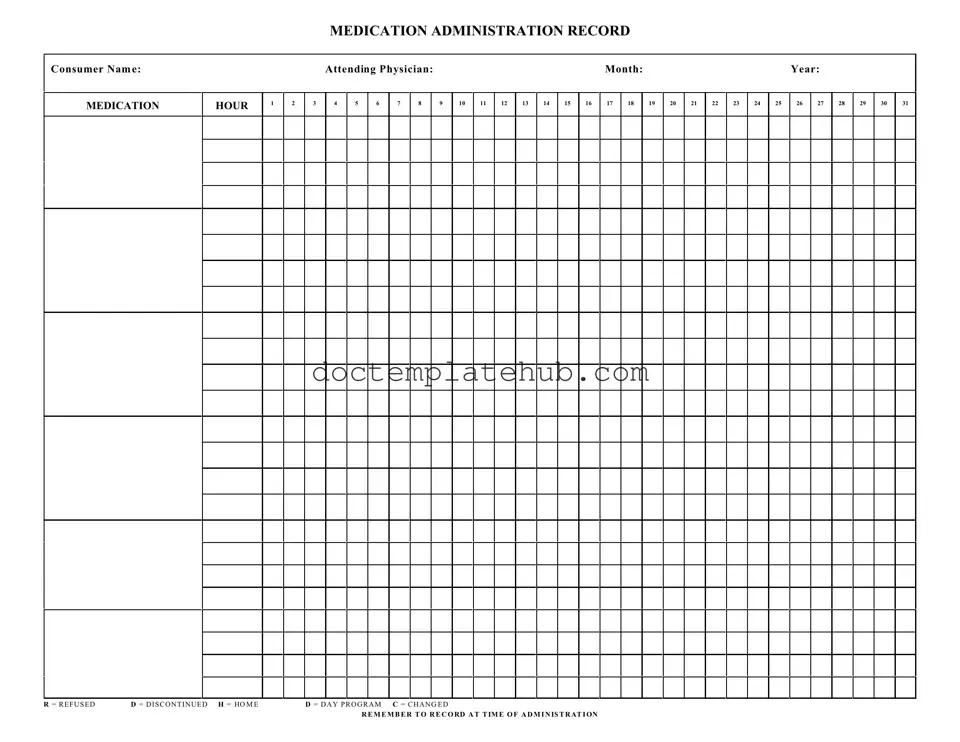What is the purpose of the Medication Administration Record Sheet?
The Medication Administration Record Sheet (MARS) is designed to track the administration of medications to consumers. It ensures that medications are given at the correct times and helps monitor any changes in the medication regimen.
How should I fill out the consumer's name on the form?
Clearly write the consumer's full name at the top of the form. This helps ensure that the medication records are accurate and linked to the correct individual.
What information is required in the 'Attending Physician' section?
In the 'Attending Physician' section, include the name of the physician responsible for the consumer's care. This allows for quick reference in case of any questions or concerns regarding the medication prescribed.
How do I indicate that a medication was refused?
If a consumer refuses medication, mark the appropriate time slot with an "R" to indicate refusal. This notation is crucial for tracking compliance and understanding the consumer's medication history.
What does it mean if a medication is marked as discontinued?
Marking a medication with a "D" signifies that it has been discontinued. This helps keep the record up to date and prevents confusion about medications that are no longer being administered.
How can I indicate a change in medication on the form?
Use the letter "C" to denote a change in medication. Ensure that the new medication details are recorded accurately in the appropriate section of the form to maintain clarity.
What should I do if I administer a medication outside the scheduled hour?
In cases where a medication is administered outside the scheduled hour, document the time of administration clearly. This is important for maintaining accurate records and ensuring the consumer's safety.
How do I record medications administered during a day program?
If medications are administered during a day program, use the letter "D" to indicate this on the form. This helps differentiate between medications given at home and those given in a program setting.
What happens if I forget to record a medication administration?
It's essential to record each administration at the time it occurs. If you forget, make a note as soon as you remember. Consistent record-keeping is vital for the consumer's health and safety.
Why is it important to record the time of administration?
Recording the time of administration is crucial for tracking medication effectiveness and ensuring that doses are spaced appropriately. This information helps healthcare providers make informed decisions about the consumer's care.
